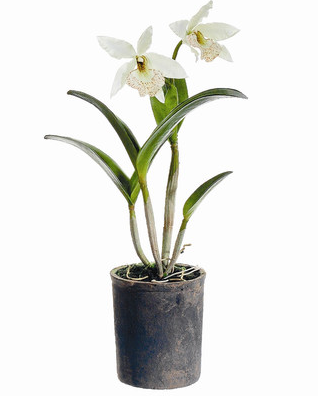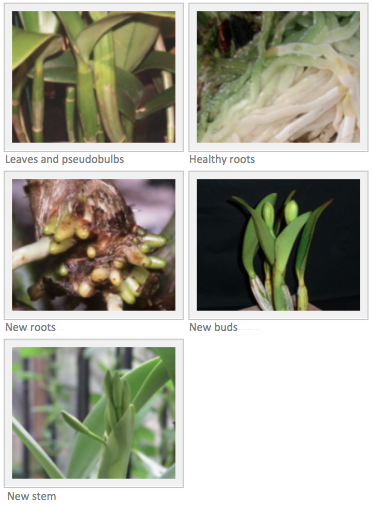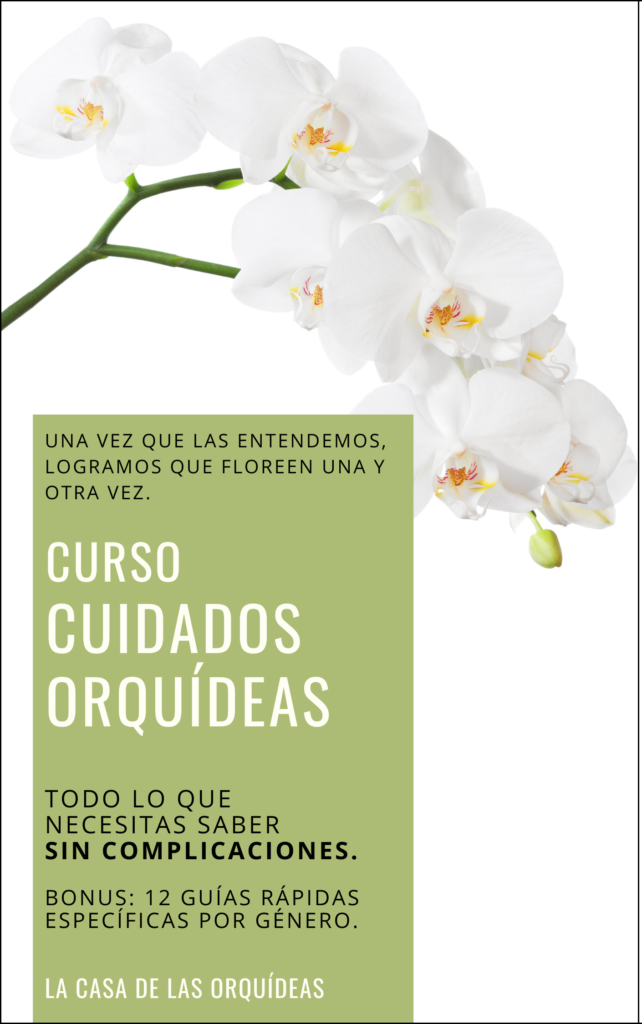+ Spanish
It’s a genus of around 75 species. Most of them from Central and Southamerica.
Cattleyas are divided in two groups:

- Cattleyas labiatas or unifoliate: they have 2 or 3 big flowers with wide petals that last up to 4 weeks. It flowers twice a year.
- Bifoliate Cattleyas: have small flowers in clusters of 20 or more.
The genus Laelia is commonly grouped with the Cattleya, because the only diference between them is the number of polynya they have. They have pseudobulbs.
knowing your orchid:

general care:
 WATER: It\’s important to water them only in the mornings with room temperature water so that the leaves and new growths have time to dry before the temperature drops in the evening. Excess water can be a focus of infection and can damage the plant. The frequency of waterings will depend on your climate and the time of the year; waterings should be more frequent and abundant during the hot months and if your climate is dry, you may need to water up to 3 times a week, fertilizing only once a week. During the winter and in cold zones, the watering and the feedings can be spaced every 7 to 10 days to avoid root rot. It will also depend on the type of media you’re growing them in. Cattleya roots like to be almost dry between waterings.
WATER: It\’s important to water them only in the mornings with room temperature water so that the leaves and new growths have time to dry before the temperature drops in the evening. Excess water can be a focus of infection and can damage the plant. The frequency of waterings will depend on your climate and the time of the year; waterings should be more frequent and abundant during the hot months and if your climate is dry, you may need to water up to 3 times a week, fertilizing only once a week. During the winter and in cold zones, the watering and the feedings can be spaced every 7 to 10 days to avoid root rot. It will also depend on the type of media you’re growing them in. Cattleya roots like to be almost dry between waterings.
RELATIVE HUMIDITY:
40% – 60%.
If your HR is to high, it’s very important to have good ventilation to prevent diseases. To increase your HR, please visit our post “Tips to increase Relative Humidity“.
Day: 70ºF – 80ºF
Night: 55ºF – 60ºF
It’s ideal that there is a difference of 15ºF to 20ºF between day and night temperatures to promote new growths (leaves, stems and roots). If your temperature is higher that the ideal, you’ll have to increase the RH, airing and waterings, to avoid premature withering of the flowers and buds and the dehydration of your plant.

MEDIUM LIGHT: this genus likes medium light. Using the Shadow Trick (see Basic Care: Light Issues section), the shadow from your hand should be light grey, not completely defined; if the shadow is darker, the that spot is not for this orchid. NEVER IN DIRECT SUNLIGHT!! Ideal locations: east, south or west facing windows with a sheer curtain.
ARTIFICIAL LIGHT: four tube 40 watt fluorescent fixtures placed 6″ to 12″ above the leaves for 10 to 12 hours a day.
These are the IDEAL conditions, however, orchids are more adaptable than we think!! You\’ll just have to put a bit more effort accommodating them in their new environment. Look for tips in our Magazine!
to know more about nutrition, growing media and basic care, click below:




